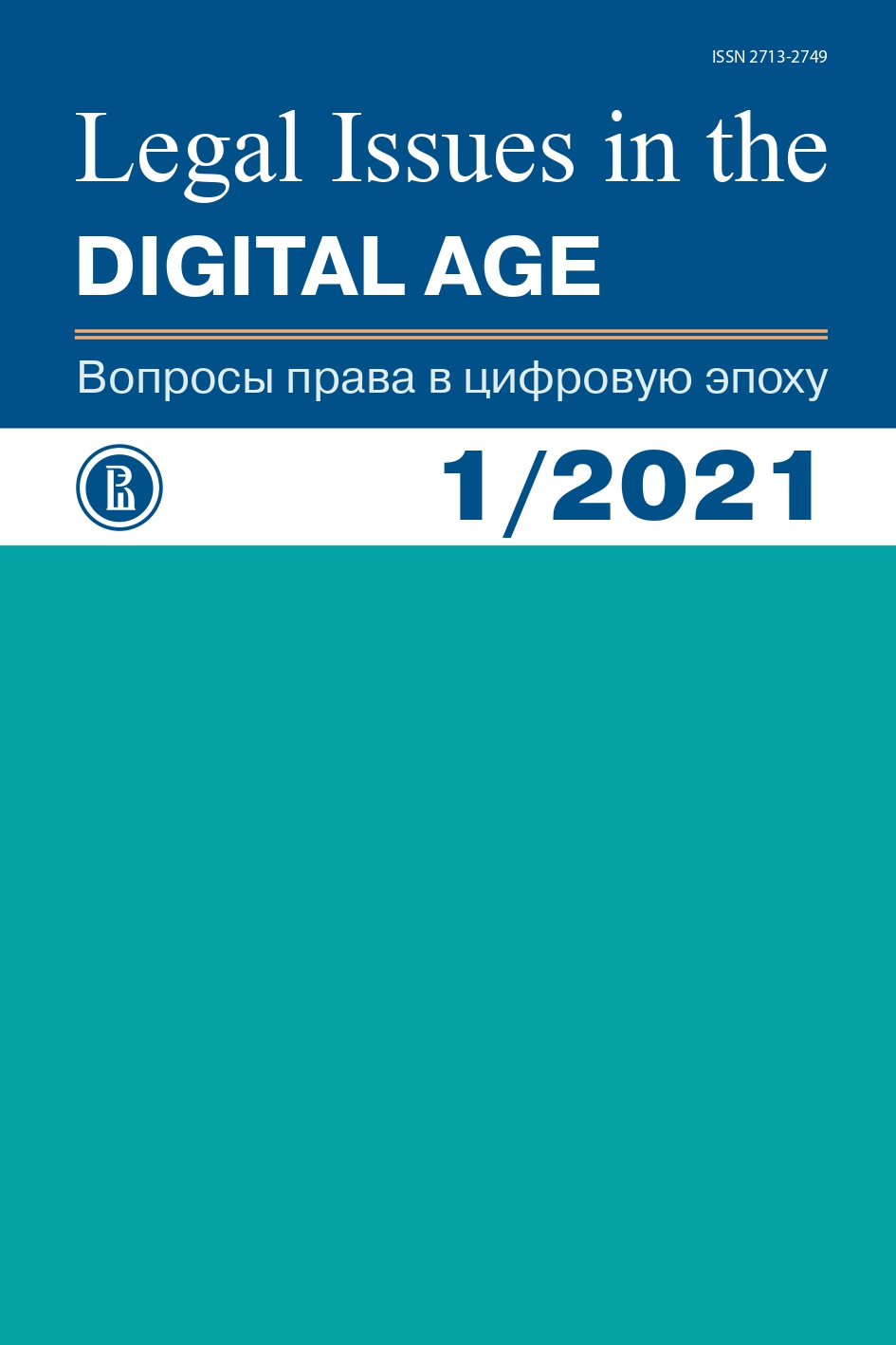Rights to Intellectual Works Generated with Artificial Intelligence: A Russian View in the Global Context
Abstract
The broad use of artificial intelligence in creating intellectual works poses difficulties for legislators and courts in choosing the proper legal framework for such works and defining the place of artificial intelligence in the legal system as a whole. In this article, we shall study different models of regulating such issues and analyze the prospects and consequences of their use. We show that only a few of many different models for copyrighting AI-generated works are viable and that the most promising among them is the introduction of a special limited related right for the person who organizes the use of the AI application. This model resembles already existing civil law approaches to protecting the rights of phonogram producers, broadcasting and cablecasting organizations, and database creators. Thus, the inclusion of artificial intelligence into the IP domain does not require reconstructing the legal framework but only adapting existing approaches.
References
Bently L., Sherman B. (2004) Intellectual property law. Oxford: University, 1131 p.
Butler T. (1982) Can a computer be an author: Copyright aspects of artificial intelligence. Hastings Comm & Ent., no 4, pp. 707–747.
Dozortsev V.A. (2003) The right to a film as a complex multilevel work. In: Intellectual Rights: Terms. System. Aim of Codification. Moscow: Statut, pp.143–170.
Feather J. (2010) The significance of copyright history. In: Privilege and property: Essays on the history of copyright. N.Y.: Open Books, pp. 359–368. DOI: https://doi.org/10.2307/j.ctt5vjt9v.18
Garnett K., James J., Davies G. (1999) Copinger and Skone James on copyright. L.: Sweet & Maxwell, 1225 p.
Hristov K. (2020) Artificial intelligence and the copyright survey. Available at: https://ssrn.com/abstract=3490458 or: http://dx.doi.org/10.2139/ssrn.3490458 (accessed: 1.02.2021) DOI: https://doi.org/10.2139/ssrn.3490458
Jaszi P. (1992) On the author effect: Contemporary copyright and collective creativity. Cardozo Arts and Entertainment Law Journal, no 2, pp.293–320.
Kalyatin V.O. (2016) Defining public domain in contemporary information society. Pravo. Zhurnal Vysshey shkoly economiki, no 2, pp. 4–14 (in Russian)
Karapetov A.G. (2016) Economic analysis of law. Moscow: Statut, 528 p. (in Russian)
Kreutzer T. (2008) The model of German copyright law and regulation alternatives. Available at: https://www.nomos-elibrary.de/10.5771/9783845212197.pdf?download_full_pdf=1 (accessed: 2.02.2021)
Kumar S., Lavery N. (2019) Does AI generated work give rise to a copyright claim? Available at: https://www.natlawreview.com/§/does-ai-generated-work-give-rise-to-copyright-claim (accessed: 1.02.2021 )
Morrigi A. (2017) The role of intellectual property in the intelligence explosion. Available at: https://www.4ipcouncil.com/application/files/9615/1638/1031/The_Role_of_Intellectual_Property_in_the_Intelligence_Explosion.pdf. (accessed: 1.02.2021)
Nazarov N. (2020) Attribution of authorship to intellectual works generated by artificial intelligence. Intellektual’naya sobstvennost’. Avtorskoe pravo i smezhnye prava, no 3, pp. 53–62 (in Russian)
Naumov V.B., Tytyuk E.V. (2018) Legal status of the “creative” work of artificial intelligence. Pravovedenie, no3, pp. 531–540 (in Russian) DOI: https://doi.org/10.21638/spbu25.2018.307
Perri M., Margoni T. (2010) From music tracks to Google maps: Who owns computer-generated works? Computer Law and Security Review, no 6, pp. 621–629. DOI: https://doi.org/10.1016/j.clsr.2010.09.005
Prange D., Lawson A. (2018) Re-evaluating companies’ AI protection strategies. Managing Intellectual Property, no 272, pp. 35–38.
Rai A. (1999) Regulating scientific research: Intellectual property rights and the norms of science. Northwestern University Law Review, no 1, pp. 77–152. DOI: https://doi.org/10.2139/ssrn.172032
Samuelson P. (1986) Allocating ownership rights in computer-generated works. University of Pittsburgh Law Review, vol. 47, pp.1185–1204.
Searle J. (1980) Minds, brains, and programs. Behavioral and Brain Sciences, no3, pp. 417–424. DOI: https://doi.org/10.1017/S0140525X00005756
Selvadurai N., Matulionyte R. (2020) Reconsidering creativity: Copyright protection for works generated using artificial intelligence. Journal of Intellectual Property Law & Practice, no 7, pp. 536–543. DOI: https://doi.org/10.1093/jiplp/jpaa062
Solum L. (1992) Legal personhood for artificial intelligences.Available at:https://scholarship.law.unc.edu/cgi/viewcontent.cgi?§=3447&context=nclr (accessed:1.02.2021)
Vaver D. (1994) Translation and copyright: A Canadian focus. European Intellectual Property Review, no 4, pp.159–166.
Yu R. (2017) The machine author: what level of copyright protection is appropriate for fully independent computer-generated works? University of Pennsylvania Law Review, no 165, pp. 1266–1268.
Authors who publish with this journal agree to the Licensing, Copyright, Open Access and Repository Policy.










